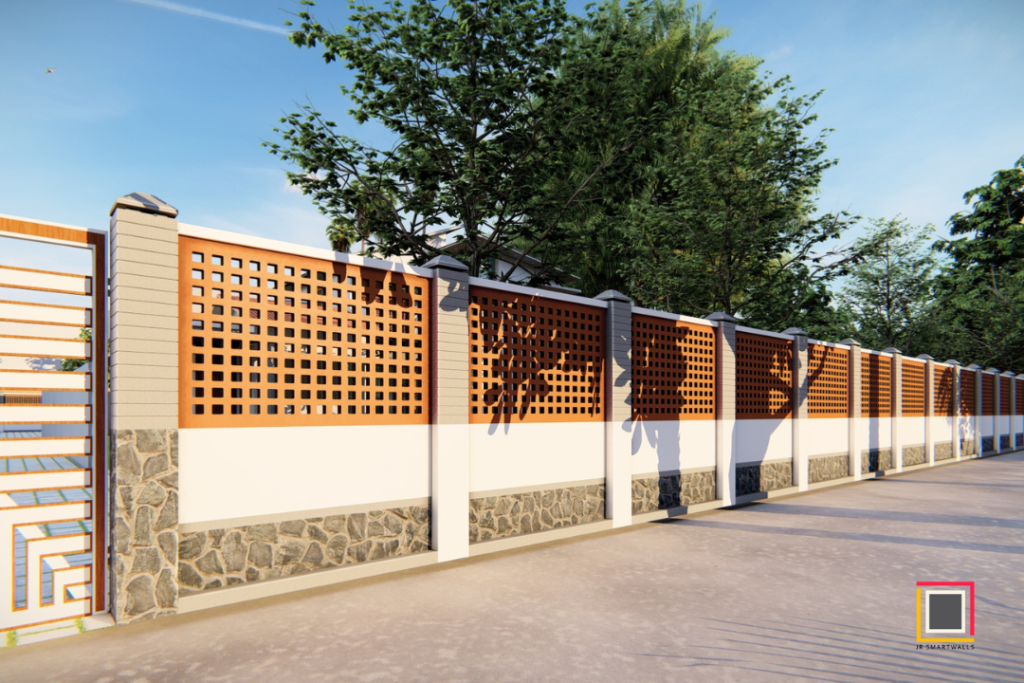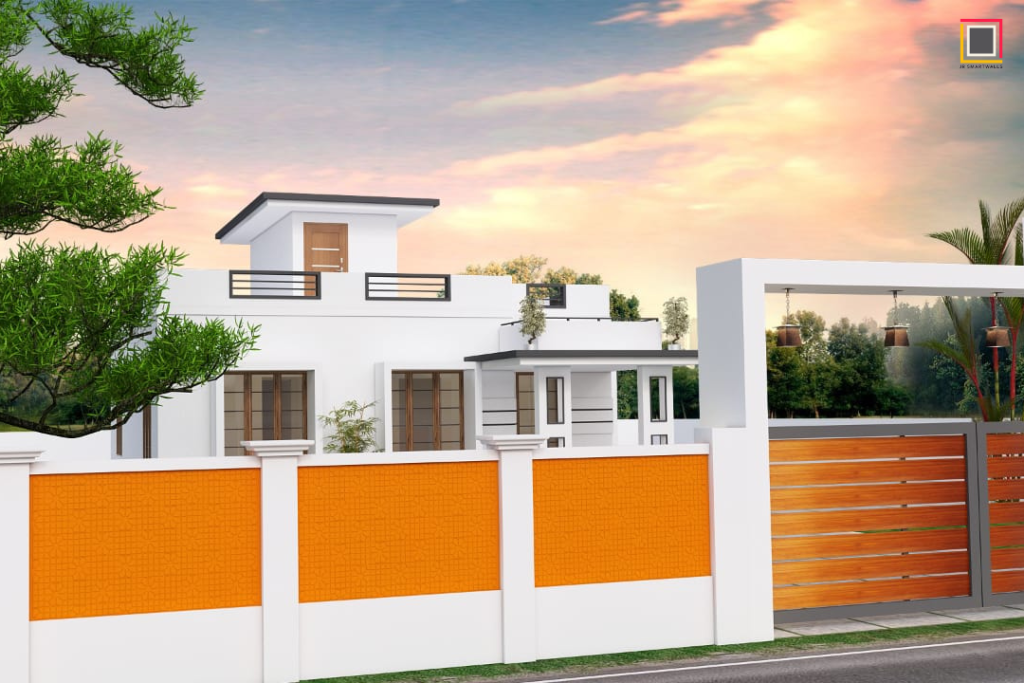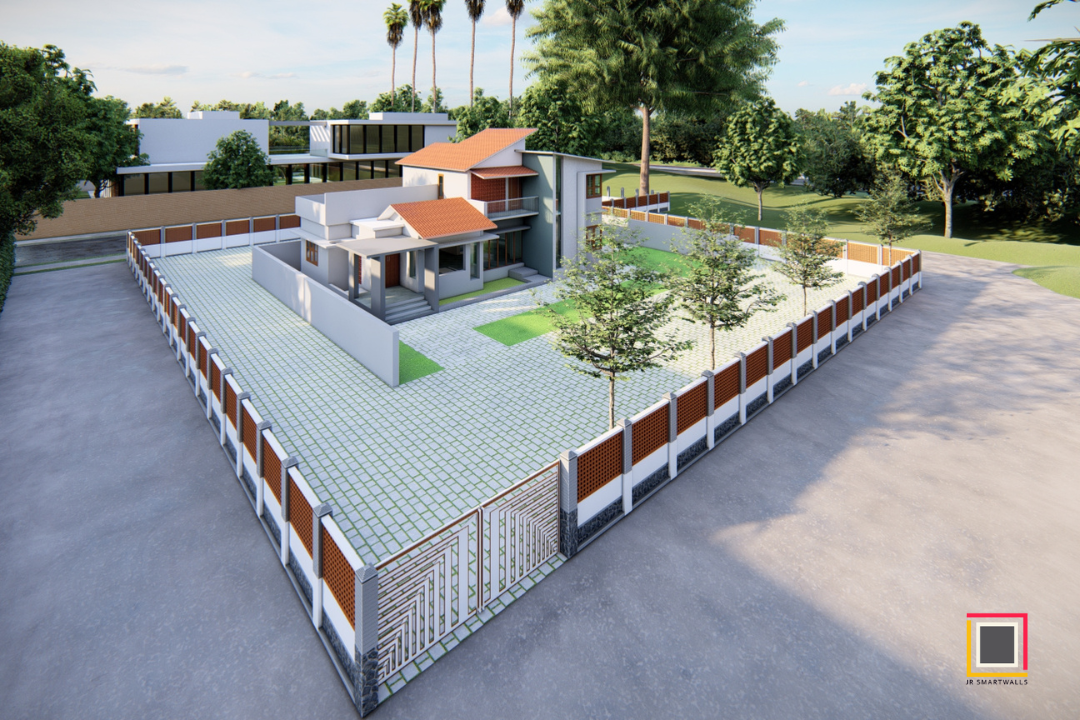Concrete is an ideal material for use in construction areas. It is challenging, fire, termite, and weather-resistant. Due to this behavior of concrete, it will last long and be durable. The walls made of concrete are commonly known as concrete walls. Here, we discuss the advantages of concrete wall designs, how concrete walls influence the world of compound walls, etc.
Concrete wall designs and compound walls
We know that the ultimate aim of compound walls is to make boundaries or limits to our properties. Due to the compound walls, we can easily resist the unwanted entrance of strangers, or it may provide safety and privacy to our properties. However, creating a compound wall with an attractive and custom design takes a lot of work and may consume more time than the traditional method.
But nowadays, we can easily make precast concrete wall designs using molds. Here, precast concrete wall designs play a significant role in making compound wall designs. Precast concrete walls are the concrete walls cast by the company and installed on the site. Speedy installation helps save time and is more cost-effective than the traditional compound walls.

Advantages of precast compound walls
Precast concrete walls are more beneficial than traditional compound walls. Precast compound walls are made with concrete mix, which helps them become more sturdy and have a long-lasting life.
Precast compound walls are a time-consuming process because the concrete wall designs are cast by the company and installed on the site; due to this, we can easily install them. Compared to traditional compound walls, precast compound walls are a time-saving process.
We can easily make custom designs in precast boundary walls, but creating them in traditional compound walls takes work. In JR, we use specially made rubber molds for making custom-designed precast compound walls.
Concrete compound walls are three times more durable than the conventional method. We use the M30 concrete mix and AR fiberglass to cast precast compound walls. It makes the precast compound walls more sturdy and durable with a custom attractive design. Once the concrete mix is added to the rubber molds, the mold will be kept in a concrete vibrating table for vibrations; this helps the concrete fill the air bubbles or gaps between the concrete mix. This process makes the precast compound walls more sturdy and durable with an attractive custom design.

Due to the use of rubber molds, we get unmatched finishing for precast compound walls compared to the regular compound wall designs. Rubber molds will help to get unmatched finishing to the precast compound walls more than the handmade stable compound walls.
The dimensional stability is the other significant advantage of precast compound walls. We know that we use rubber molds to cast the concrete compound walls. Using rubber molds gives us better dimensional stability than regular compound walls.
Less space consumption is also an advantage of precast compound walls. We know that the traditional compound walls will consume more space, but precast compound walls are less space consumers.
FAQ
Why should you choose to build compound walls over ordinary walls?
The compound walls offer many benefits over regular barriers, such as low maintenance costs and easy installation across an ample space, high quality and long durable life span, appealing design, and quick duration. Compared to standard walls, boundary walls can be profit-making as high as 60%.
What makes JR smart walls unique?
JR smart walls differ from other walls because the moulds of rubber that are used for the production of JR smart walls are cast only to be used for boundary wall precast designs, which provide a good finish with a firm, attractive and durable design. The moulds that we use are high-quality because the rubber that is used to create the rubber moulds used for compound wall precast is sourced from our native in Kerala, India. Unique designs, as well as the specially cast rubber moulds, make JR smart walls different in comparison to other walls.
Advantages of precast compound walls
- Customized design with aesthetic appeal
- Three times more durable than the conventional method
- Strength – made with M30 concrete, AR fiberglass
- Finish – unmatched finishing with rubber moulds, better finishing than handwork
- Dimensional stability – as it is cast with moulds
- Consistent quality
- Time-saving installation
- Less space consuming
- Reduced maintenance
- Versatility of applications
- Fire, termite, weather resistant
What is the purpose of precast compound walls?
The precast compound walls block traffic and block out strangers through our personal space. The privacy and security of our daily lives are more than just a matter of walls aiding us. Precast compound walls help bring it to life in a very short period and at a cost-effective price.
How are precast compound walls made?
Precast concrete that has been poured into a reusable JR-made rubber mold that can be specially cast to make wall precasting; after it has completed the filling of concrete, the mould will be put in the vibrating table to vibrate, which assists in removing air bubbles that are present in the concrete. Precast compound walls have an excellent finish.
What makes concrete walls the best in the world of compound walls?
Concrete stands strong and tall when considering other compound wall materials. The unmatched durability, versatility, and affordability make house owners, contractors, and builders choose concrete walls. Concrete boundary walls are fire, termite, and weather-resistant; precast compound walls will last longer than traditional ones. Concrete boundary walls are cost-effective, time-saving installation, easy to make custom designs, sturdy and durable, unmatched finishing than the hand made boundary walls. These features of concrete boundary walls make them more popular in the field of compound walls.


